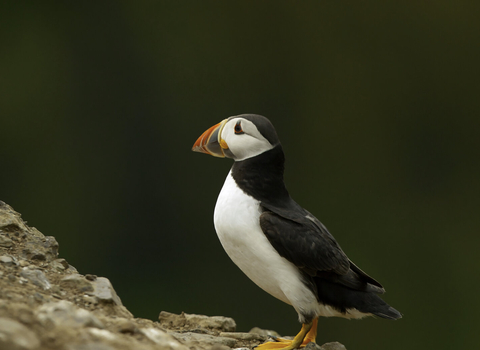Conservationists from around the Irish Sea are looking to turn a tide of inaction to ensure the Irish Sea and all its inhabitants are protected.
While 36 per cent of the Irish Sea is designated as a Marine Protected Area, only approximately five per cent has any management in place and less than 0.01 per cent is fully protected.
The Irish Sea is under significant and increasing pressure from climate change and activities like fishing, aquaculture, development, shipping, aggregates, military activity, recreational activity and pollution.
And while more than 15 million people live around the Irish Sea and many more visit for holidays, only a small percentage of them realise what wildlife lives there and just how important it is for biodiversity and the environment.
Conservationists representing six countries and a number of different organisations – The Wildlife Trust of South and West Wales, Manx Wildlife Trust, North Wales Wildlife Trust, the North West Wildlife Trusts, Scottish Wildlife Trust, Sustainable Water Network (Ireland), and Ulster Wildlife – have come together to press for action.
The Irish Sea region is already considered to be in a degraded state. The Irish Sea Network has produced a Review of the Irish Sea 2022 and has laid down their vision and calls to action to protect and improve the health of the Irish Sea.
Lisa Morgan, Head of Islands and Marine at the Wildlife Trust of South and West Wales, says:
"Our marine wildlife knows no boundaries, policies, or legislation. Over half the world population of Manx shearwaters breed on the Welsh islands and use the whole of the Irish Sea when foraging to feed both themselves and their chicks. Atlantic Grey Seals travel from the Welsh coast to the Irish coast and from north to south Wales as they prepare for the autumn pupping season. This new partnership comprising of conservation organisations surrounding the Irish Sea recognizes this connectivity and by coming together we can improve our collective impact for species and habitat protection and restoration."
Sinéad O’Brien, Coordinator of Sustainable Water Network (SWAN), said: “It is clear that pressures in the Irish Sea are increasing. Although 36% of the Irish Sea is designated as protected, Ireland contributes only about 1.4% to that figure and due to a lack of management plans for these protected sites the level of actual protection is much lower again. The Irish Sea is about to get much busier. For example, we know that we are about to see a huge expansion of offshore renewable energy projects, but if we want to tackle the twin climate and biodiversity emergencies, we need robust marine planning which ensures space for nature through a network of effective marine protected areas covering a minimum of 30% of our waters. The time for action is now.”
Rachel Sharp, CEO of Wildlife Trusts Wales, said: “Wales has more sea than land and the only effective way of managing this natural resource is to work in partnership. Therefore, Wildlife Trusts Wales welcomes the Irish Sea Partnership at this critical time in understanding the multiple pressures affecting our marine environment. Together we can take the urgent action needed to restore the Irish sea for people and for nature.”

